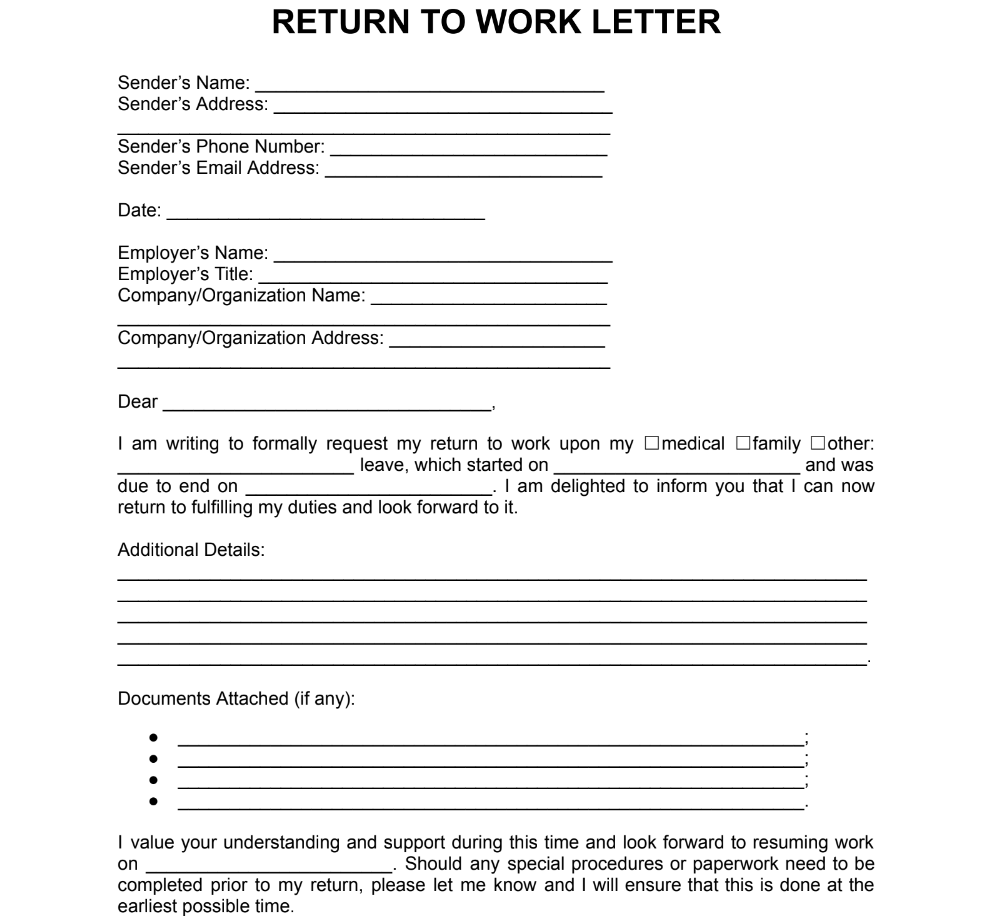 Preview
Preview

A return back to work letter is a formal document, often issued by a healthcare provider, that states the employee’s readiness to resume work duties. It serves as an assurance that an employee’s health or personal issues have been resolved and that he or she is fit to return to the workplace. This process can be made smooth and efficient with a well-crafted return to work letter template.
A return to work notice to employee comes into play on several occasions:
Generally, a letter to return to work involves two parties:
The back to work letter usually includes:
Crafting a meticulously planned return to work letter from the employer is paramount in facilitating the smooth reentry into the professional environment.
Small details can have a significant impact. A return to work letter that is carefully written by a professional can show an employee’s preparedness to return to work and their dedication to their job and company.
One can conveniently explore online for an example of a return to work letter from an employer to an employee to bypass the challenge of structuring the letter. Using the above steps and amalgamating them with an industry-specific template, you can construct an effective return to work letter, heralding a successful re-entry into your professional life.
 Preview
Preview
